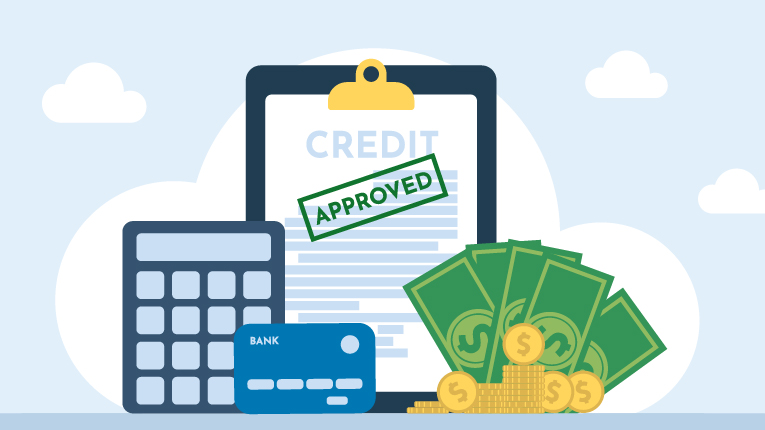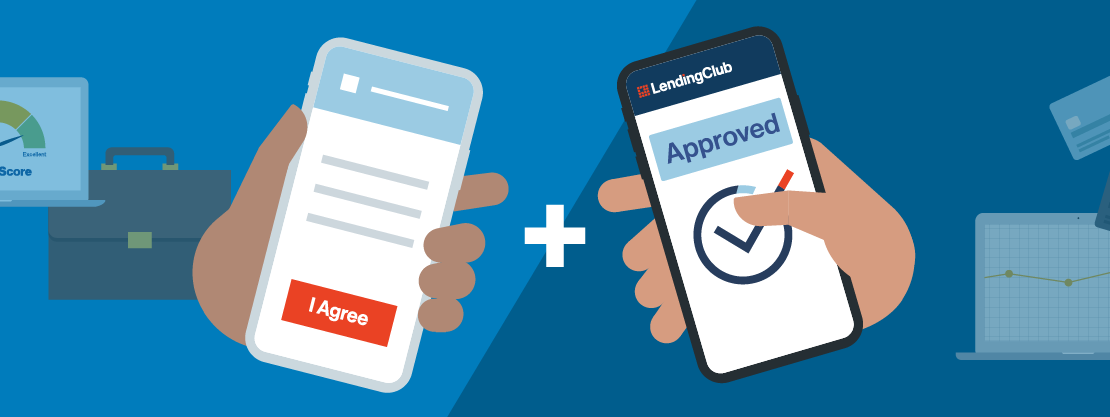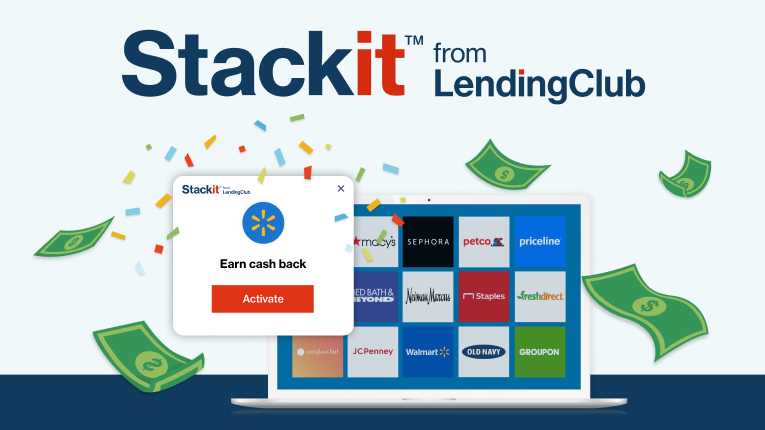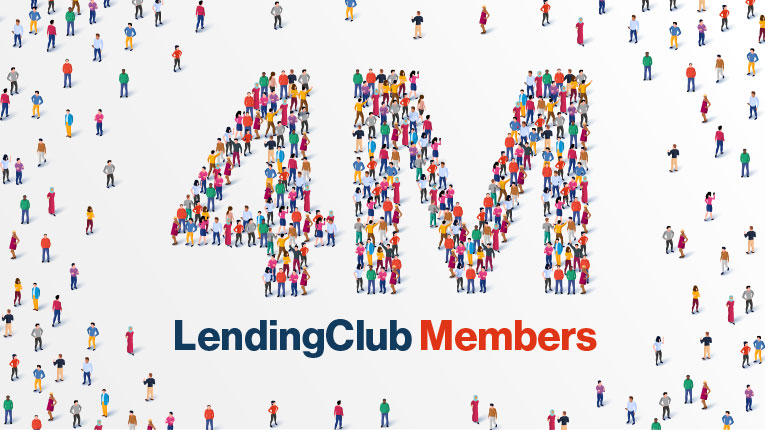Personal Loan vs. Credit Card: How to Decide Which Is Right for You

Whether you’re looking to gain control over monthly bills, manage debt, or fund a major purchase, personal loans and credit cards are two very different ways to achieve your financial needs. With more consumers than ever now planning to apply for a personal loan or credit card, it’s important to understand their key differences, pros, and cons, so you can confidently decide which best suits your needs.
Each option has its perks and pitfalls, and the best choice will often depend on your goals, current situation and spending habits. Here is how to compare personal loans vs. credit cards.
At a Glance: The Difference Between Personal Loans and Credit Cards
Credit Card | ||
|---|---|---|
What is it: | A lump sum borrowed for a purpose you choose and repaid monthly over time | A payment card used for charges against a line of credit, accruing balances with a minimum amount that must be repaid monthly |
When to use: | Consolidate/pay | Pay for day-to-day expenses without cash or checks, accumulating balances that can be easily repaid in full each month |
Pros: | Larger borrowing limits; lower interest rates than most credit cards; | Convenience; no interest due if total monthly balance paid in full; earn rewards or cash back on purchases |
Cons: | Loan repayment starts immediately; some lenders may require an origination fee or prepayment penalty | High, variable interest rates; credit limits can vary; potential for |
Credit cards allow you to make purchases, pay bills, transfer balances, or access cash advances whenever you want for an unlimited period of time. Personal loans allow you to borrow a specified amount under terms that include a defined repayment schedule. Though there is a convenience aspect to physical credit cards, carrying balances from one month to the next over long periods of time can accrue hefty interest charges and might not be the best financial decision. When comparing credit card interest vs. personal loan interest, personal loans often win out, especially if you’re not able to pay off your balance each month.
Based on your circumstances, one may be more beneficial than the other. Much of the decision making comes down to figuring out which option offers you the right amount of money at the most favorable rate and repayment terms.
How a Credit Card Works
Credit cards are convenient financial tools for most people—in fact, according to the Federal Reserve, 83% of us have at least one. While credit cards can help pay everyday expenses, finance purchases, and build credit history, those perks can come with costs—especially if you struggle to manage credit wisely.
Here’s how they work:
Credit card issuers extend you a line of credit, and in exchange you agree to pay it back by the monthly due date or over time.
If you can’t pay the balance in full each month, you’ll owe at least a minimum payment (typically between 1% and 3% of the balance). Being late with a payment or missing one entirely can incur a fee and negatively impact your credit score.
Interest accrues on the remaining unpaid amount. The higher the balance you carry from month to month, the more the interest will add up, or compound.
Part of your credit score depends on the amount of credit you have vs. the amount you use—known as the credit utilization ratio. A recommended guideline, according to the Consumer Financial Protection Bureau, is to use 30% or less of available credit to show that you can keep your spending in proportion to your overall credit limit.
Using a credit card responsibly can help build good credit over time and help you achieve bigger financial goals. Here are three reasons you might want to use a credit card:
You want a reliable way to pay for important purchases
When you pay for something with a credit card, you're often protected against damage, theft, or loss of the item for as long as 90 to 120 days after the purchase. Known as purchase protection, this credit card benefit is kind of like short-term insurance for products you buy.
You want to take advantage of rewards programs
Many of the best credit cards offer perks like cash back, discounts, points, or miles on all purchases, letting you maximize rewards and save money simply by paying with your card. For example, you could use a card that offers the best grocery bonuses to do all your food shopping, earning free cash for regular purchases.
You want a backup plan
Credit cards give you the option to safely pay without cash, checks, or debit cards. And having a card on hand can give you peace of mind should you need it—even if you reserve it purely for emergencies.
Credit Card Pros and Cons
Even the best credit cards come with drawbacks. Here’s a rundown of the pros and cons you’ll want to consider.
Credit Card Pros
Convenience and purchase protections
A widely accepted form of payment
No interest when the monthly balance is paid in full
Rewards, discounts, points, or cash back on purchases
Emergency purchasing flexibility
Wise use helps build credit history
Credit Card Cons
Credit limits and interest rates can vary
Higher credit card interest rates vs personal loan interest rates
Possible annual fees and late fees
Research needed to choose the best credit cards
Potential for high-cost credit card debt to accumulate
Credit score damage if used irresponsibly
How a Personal Loan Works
A personal loan is a lump sum of money you can borrow (once approved) for almost any purpose, such as consolidating credit card or other debt, paying moving costs, or making home improvements. Here are a few more things to know:
A personal loan is paid back at a fixed interest rate with fixed monthly installments over a predetermined repayment schedule.
With a personal loan, you’re borrowing the entire lump sum, whereas a credit card acts like a credit line (where you pay only for funds you tap).
Personal loans come in two types: secured and unsecured. Secured loans require you to put up collateral; unsecured loans don’t require collateral. Both, however, base approval on your creditworthiness.
Applying for a personal loan jointly may help secure approval if getting a loan on your own is a concern. While adding a credit-worthy co-borrower may help qualify you for a better loan, you’ll share in the loan funds and your co-borrower has to agree to take equal responsibility for repayment of the loan.
When to Use a Personal Loan
Personal loans can be an effective financing choice in many situations—including those that involve larger cash sums that you want to pay off over time. Here are a few reasons choosing a personal loan over a credit card can make good financial sense:
You want to consolidate credit card debt
Credit cards tend to charge higher interest rates compared to other borrowing options. According to the latest Federal Reserve data, when it comes to credit card interest vs personal loan interest, personal loans are typically more favorable—the average interest rate on a 24-month personal loan is 9.65%, and the average interest rate for credit cards is 16.28%. Using a personal loan to pay off higher-interest debt lets you fold multiple payments into one manageable payment with a more favorable interest rate and terms, which can save you money.
You need a large amount of money
Generally, a personal loan gives you flexible access to more cash than a credit card does, without the drawback of racking up high interest on large purchases that can’t be paid off within a month or two. With a fixed and typically lower interest rate, personal loans can be used to make major purchases, handle big expenses, or fund important goals.
You prefer more control over your cash
Personal loans offer added flexibility when it comes to accessing and dispersing your money. Because funds are usually deposited directly into your bank account within days, you can decide when and how to fill a short-term cash need for an emergency or invest in a big purchase, managing your priorities as necessary.
Personal Loan Pros and Cons
As you weigh the option of a personal loan vs. credit card, it’s important to keep the positives and pitfalls in mind. Here’s a breakdown of the pros and cons.
Personal Loan Pros
Larger borrowing limits
Lower interest rate than most credit cards
Predictable repayment plan
Swift application and disbursement of funds
Greater control and flexibility over funds
Positively impacts credit score with on-time payments 1
Personal Loan Cons
Loan repayment starts immediately
Required, fixed payments with interest
Possible origination fee, prepayment penalty, or late fees
While not common, collateral may be required for secured loans
4 Questions to Ask When Deciding Between a Personal Loan or a Credit Card
Everyone’s financial situation is unique, which makes choosing a personal loan vs. credit card an individual decision. These three questions can help you analyze which option might work best for you:
Do you know why you need the money?
If you don’t have a specific purpose or timeline in mind, it’s probably better to consider a credit card. That’s because you pay a credit card balance based on what you charge, whereas a personal loan is a lump sum borrowed up front that you need to start repaying immediately, regardless of whether or not you use the funds right away.
On the other hand, if you do have a specific reason you need the money, know exactly how much you need, and know for how long, securing a personal loan at a lower interest for a predictable time period may be a wiser move than a credit card.
What effect will your credit report have on your choice?
The interest rate you’re offered on a personal loan or credit card depends largely on your credit profile. Excellent credit, a strong credit score, a lower debt-to-income ratio, and a record of on-time payments will more how much you need, and know for how long, securing a personal loan at a lower interest for a predictable time period may be a wiser move than a credit card. Conversely, a period of bad credit, struggles with late payments or collections, or a weaker credit score could lead to a higher interest rate.
Along with these facts, it’s crucial to shop around and compare interest rates and annual percentage rates (APR) when assessing offers for credit cards or lenders for the best personal loans. These numbers could vary by several percentage points among lenders, affecting the total cost of your borrowing.
Will you pay off your credit card balance every month?
As a general rule, if you’re able to pay off your balance each month, the right credit card can offer many advantages. With many cards, you not only have convenience, but purchase protection, membership perks, select warranties, and travel and cash rewards. Not to mention, consistently paying your balance in full each month guarantees you never have to worry about the added costs of accrued interest.
But if you anticipate purchases that would require payback over time, interest rates can add a significant charge to an already costly purchase, and would likely make a personal loan the better option.
Could a balance transfer option serve your needs?
Debt consolidation loans are a form of debt refinancing that combines multiple balances from high-interest credit cards or other high-interest loans into a single loan with a fixed rate and fixed term. It can help you save money by reducing your interest rate, lowering your monthly payment, or making it easier to pay off your debt faster.
Balance transfer credit cards may feature an introductory zero percent rate, typically between 12 to 18 months. If you’re sure you can repay what you owe before the promotional period ends, you could save money on interest costs. However, many balance transfer credit cards charge a balance transfer fee—usually 3% to 5% of the amount you transfer—so make sure you consider that added cost in your comparison.
If you know you’ll need a few years before paying down your debt, a balance transfer personal loan could be a better option. This is a type of personal loan that allows you to consolidate multiple debts, often at a lower interest rate when compared to credit cards. In addition to the savings and convenience of one single, easy-to-manage payment, choosing a balance transfer loan can help increase your credit score over time. Many LendingClub members who choose balance transfer loans see an increase in their credit score while saving money with a lower APR.*
The Bottom Line
There’s a lot to think about when you’re evaluating pros and cons of a personal loan versus a credit card. Before you choose, you’ll want to consider how much money you need and how quickly you can pay it off. Then compare interest rates and fees, and weigh the overall cost of each borrowing option. Once you decide, look for credit cards that meet your needs, or compare online lenders for the most competitively priced personal loan you can afford. LendingClub offers personal loans with no prepayment penalties or application fees, along with fixed interest rates and monthly payments.
Personal Loan vs. Credit Card FAQ
Still have questions? Some of these commonly asked questions may provide the answer.
How are personal loans different from credit cards?
Personal loans are lump sums of money that are paid back over a predetermined period of time. Credit cards offer a line of credit that accrues a balance and requires a monthly minimum repayment. Though credit cards can be convenient, especially for smaller day-to-day expenses, carrying balances over several months can result in significant interest charges on top of the money you already owe.
When does a credit card make more sense than a personal loan?
A credit card may make sense for smaller purchases, like groceries, gas, or your morning coffee. As long as you’re confident you can pay off the total balance at the end of the month, using a credit card can be a good option. But if you’re looking to finance a larger purchase,like a home remodeling project, or you’re hit with a large, unexpected expense, like a medical bill, a personal loan can help you access the funds you need with a low interest rate and achievable repayment plan.
Should you use a personal loan to pay off credit card debt?
Generally speaking, personal loans carry lower interest rates than credit cards, so if your credit card interest rate is racking up your bill, a personal loan could be a good solution to save money in the long term. Because most personal loans include fixed repayment terms, you’ll know exactly how much you owe each month, which can help with budget management.
At LendingClub, you can check your rate and view your offers for free without impacting your credit score.
You May Also Like












